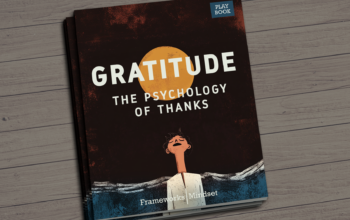Two Ways to Harness the Power of Analogical Thinking
There’s nothing like a good analogy to drive home a point.
Think of some of the most profound analogies in our culture. Who doesn’t instantly recognize Jesus’ image of the mustard seed? “The Kingdom of Heaven is like a grain of mustard seed which a man took, and sowed in his field, which indeed is smaller than all seeds. But when it is grown, it is greater than the herbs and becomes a tree, so that the birds of the air come and lodge in its branches.”
An analogy can be pithy as with one of the great communicators of our age, Winston Churchill: “A good speech should be like a woman’s skirt; long enough to cover the subject and short enough to create interest.” Or it can be robust as in Martin Luther King’s promissory note analogy that he used to frame his ‘I Have a Dream’ speech.
But analogy is more than just a simile or metaphor. So too is it extremely powerful in learning, problem solving, and creativity. Cognitive scientist Douglas Hofstadter has argued that analogy is not only common, but is at the core of all human thought. Not only is it helpful in communications, but it is the very essence of how our minds work.
The question, of course, is: How do we harness the power of analogy? How do we find other problems that have the same structure and are already solved? There are two key strategies to finding analogies: (1) cross-pollinate and (2) simplify and bootstrap.
Cross-Pollinate
First, it is essential to have access and be open to the most different perspectives as possible. In order to use solutions to other problems, you need to have access to other problems and solutions. Researcher Kevin Dunbar found that, among microbiology labs, interdisciplinary labs were more successful at solving problems and making discoveries than labs made up of researchers in the same field. Similarly, we all can benefit from coming into contact with and collaborating with people from different backgrounds and perspectives. By being open to diverse perspectives, we are exposed to problems and solutions that in our own field may not have been considered.
This might seem obvious at first, but, in this age of highly specialized work, it can be practically impossible to arrange for consistent interaction with outsiders. We have a bias toward the specialist expert and scoff at the amateur generalist. Companies tout their welcoming of diverse perspectives, but they do not back it up with policy or culture that encourages different views. As a society, we also have a problem with confirmation bias and echo chambers. It just feels good to be right even when we’re not really right. To ensure the best analogies, then, we need to first check our own biases and actually seek out different perspectives.
In a business context, it can be done by means of workspace integration. As it was with the interdisciplinary labs that Dunbar studied, a business with mixed function work spaces will be more successful at cross-pollinating and thus making discoveries. The more visible the work the better so simply walking through the workspace will expose employees of the different problems and solutions in the works. Kanbans, white boards, and review demos can be excellent sources of inspiration. It is also helpful to have an interdisciplinary show-and-tell meeting to present various success stories.
In all of these, it is essential to translate the projects into an understandable language. Like John von Neumann, we must first transform the problems and solutions into a universal logic so we can then analogize for a different business function.
It is entirely possible that an interdisciplinary workspace is not feasible. Maybe your company is so small or specialized that it cannot provide the critical mass to sustain an interdisciplinary show-and-tell. If that is the case, expand outside of your silo by means of coworking spaces or external networking opportunities and conferences. Ultimately, the more perspectives you get, the better your chances of solving that nagging problem.
Simplify and Bootstrap
The second strategy is to simplify and bootstrap. Perhaps there is not an analogy of your current problem. Perhaps it is too complex for there to be a reference. This is quite likely given the complexity of the modern business world. If this is the case, you can still harness the power of analogies by simplifying the problem to find a basic solution, then bootstrap up to solve the full, more complex problem.
Consider the Duncker Radiation Problem: A doctor has a patient with a malignant tumor. While the patient cannot be surgically operated on, the doctor can use a high-powered radiation to destroy the tumor. The problem is that the high-powered radiation will also destroy healthy tissue around the tumor. Using the radiation at lower intensity will not destroy the healthy tissue, but it will also fail to get rid of the tumor. What can be done to treat the patient?
When this problem is given to participants of a test, only about 10 percent get the right answer. But, when given a simpler analogy, 92 percent solve it. See if you can guess the solution after reading this analogy:
A small country was ruled by a dictator from a strong fortress in the middle of the country. A band of rebels knew that they were strong enough to capture the fortress if they could reach it. But if they approached the fort together, the dictator could easily spot the rebels and direct his defense toward them and wipe them out. So the rebels decided to split up into factions and approach the fortress from several angles. Unable to spot the smaller groups, the dictator failed to stop them before they arrived at the fortress, reassembled, and overwhelmed the dictator’s defenses to capture the fortress.
If you’re like 92 percent of participants, upon reading the analogy, you figured out that the doctor could use lower powered radiation from multiple directions that converged at the tumor. In this way, the radiation would be too weak to harm the healthy tissue, but strong enough at the point of the tumor to eradicate it.
What’s fascinating about simplifying is that it cuts to the chase of problem solving and thus cuts out a lot of wasted energy spent in trial and error. A remarkable study by psychologist John Sweller shows just how beneficial it can be. In the experiment, Sweller gave students a fairly complex math problem and timed how long it took each to arrive at the solution.
The problem was this: You’re given a number: 8. Your goal is to get to the number 15 in exactly six moves, where a move can either be multiplying the number by two or subtracting seven.
As you can probably tell, it’s not an easy problem to solve. It took Sweller’s students an average of over five minutes to figure it out.
For another group of students, Sweller gave that complex problem after two simpler problems, one of them being: You’re given a number: 8. Your goal is to get to the number 9 in exactly two moves, where a move can either be multiplying the number by two or subtracting seven.
If you try it, you’ll agree that this simpler problem is easier to solve. Take 8, multiply by 2, equals 16, then subtract 7, equals 9. Just by alternating the two functions, you get to the solution in no time. Solving the easy problem also gives you an analogy to solve the more complex problem. You can use the exact same alternating approach and arrive at the solution directly. Take 8, multiply by 2, equals 16, subtract 7, equals 9; multiply by 2, equals 18, subtract 7, equals 11; multiply by 2, equals 22, subtract 7, equals 15—there’s your solution in six moves.
Seeing this, you won’t be surprised that the students in the second group were able to complete the complex problem in much less time—about one and a half minutes compared to five minutes. More impressively, the students in the second group were able to complete all three of their problems in less time as the students in the first group were able to complete just the one complex problem—a little over three minutes for all three problems compared to five minutes for just the one complex problem. In this way, simplifying and bootstrapping is a kind of superpower. It saves a ton of wasted effort and allows you to accomplish much more in less time.
Conclusion
Everyone goes gangbusters for creativity and innovation these days, but few see analogical thinking as the way to get there. It is possible that analogy gets overlooked because it is so fundamental to our way of thinking. It is also possible that many view analogical thinking as something for only certain types of minds. With cross-pollinating and simplification and bootstrapping, everyone can harness the power of analogy.




